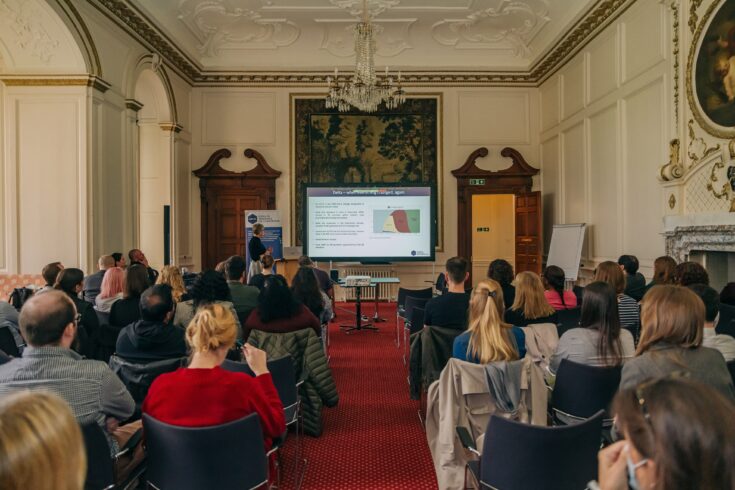How did you do it so quickly?
This is probably the question that I get asked the most when it comes to the COVID-19 Genomics UK (COG-UK) consortium. Made up of 21 partner organisations and over 600 people, COG-UK has played a pivotal role in the pandemic. The consortium has sequenced SARS-CoV-2 virus from samples taken from people with COVID-19 and used them to identify new variants and track them across the population.
Since launching in April 2020, the UK has:
- sequenced over a million SARS-CoV-2 genomes
- provided data on COVID-19 transmission and introduction in care homes, universities, hospitals and through international travel
- generated data to identify and characterise mutations and variants, enabling the tracking of variants of concern.
So many things came together at the right time to help make COG-UK a reality.
New variants: a case of when, not if
In March 2020 when it became clear that a global pandemic was imminent, I realised that the possibility of new variants would be a case of when, not if. We needed to be ready. We already had the expertise and capability in this country. So, we brought together a team of experts who met over the course of a day to develop a blueprint for what COG-UK would become.
A proposal was on Sir Patrick Vallance’s desk within three days of the meeting. We had rapid and integral support from funders, policymakers, and government. We also already had expert researchers who have been funded for pathogen genomic research for over a decade (often by Medical Research Council (MRC)).
Setting up COG-UK in the early days was based around the need for pace over perfection. We faced the challenging task of managing the logistics within a highly complex system. For example, there were two different networks handling samples from hospital labs (sequenced by academic hubs) and the Lighthouse labs (sequenced by the Wellcome Sanger Institute).
Enabling infrastructure and discoveries
A key piece of infrastructure that helped get COG-UK up and running was the Cloud Infrastructure for Microbial Bioinformatics (CLIMB) project funded by MRC in 2014. CLIMB provided the computing infrastructure and bioinformatics analysis capability and plays a pivotal role in supporting the generation of actionable information from genomes.
Government commitment to genome sequencing can also be tracked back to the 100,000 Genome Project in 2013. At this time one of the three working groups (on infectious diseases) highlighted and gave priority to pathogen sequencing in:
- tuberculosis (TB)
- HIV
- hepatitis C.
This has led to the development of one of the first routine mycobacterium tuberculosis sequencing services, which rapidly predicts drug resistance and provides information to support outbreak investigation.
One of my long-term research interests has been using pathogen sequencing to provide actionable information to outbreak investigations. In 2010, my group published a paper showing one of the first uses of bench top sequencing applied to the hospital superbug MRSA. We then applied this technique to track an MRSA outbreak in a neonatal facility.
These studies showed that genomic epidemiology provided much more granular information on outbreaks compared to the traditional approach sometimes referred to as ‘shoe leather epidemiology’. The information we provided helped define the extent of the outbreak and bring the outbreak to a close.
A One Health approach to COG-UK
Another aspect of my research that is relevant to COVID-19 is the One Health approach. This is used to study bacterial genomes to better define possible sources of antibiotic resistant bacteria that infect humans.
My group have undertaken studies to isolate bacteria from:
- patients
- hospital wards
- livestock farms
- sewage.
This is to compare their genomes to define relatedness and genes encoding antibiotic resistance. This can provide indicators for sources and transmission routes for bacteria, and the relevance of ‘farm to fork’ bacterial spread.
In a programme in which COG-UK has been involved, sewage in the UK is routinely tested to:
- detect SARS-CoV-2
- identify the presence of specific variants
- compare this with data from human-derived samples.
Looking ahead, I am keen to explore how this new capability could be utilised to detect and map specific antibiotic resistance genes in the UK.
A lasting legacy
The achievements of COG-UK were built on the hard work of our consortium members and partner organisations. For me, they are the unsung heroes of our work.
This was the first time that the four UK Public Health agencies worked together to systematically share genomic information. A way of working that I hope is retained in the future.
It is also important to make the data that we have generated accessible by future researchers. That’s why we are now working closely with Health Data Research UK (HDR UK) to transfer genome data into Trusted Research Environments. Viral genome information is also being linked with human genome data, health informatics data and other datasets. This will open up innovative areas of cross-disciplinary analysis to better understand COVID-19 and how to further improve patient outcome.
Top image: Credit: COG-UK consortium




